#Agri University
Explore tagged Tumblr posts
Text

Brainware University - Best BSc Agricultural College in Kolkata
1 note
·
View note
Text
Wezesha Agri-Eco Hub and Safaricom: Transforming Agriculture Through Youth Empowerment in Busia
Discover how Safaricom Foundation’s Wezesha Agri-Eco Hub is empowering over 5,000 youth in Busia County through agriculture, enterprise development, and ecopreneurship with a KES 120 million investment. Learn about Safaricom’s Wezesha Agri-Eco Hub, a transformative two-year pilot project aimed at creating sustainable livelihoods for youth in Busia through innovative agricultural and ecological…
#Agricultural Innovation#agriculture empowerment#Alupe University#County Government of Busia#ecopreneurship#enterprise development#KES 120 million project#Lake Basin Development Authority#Safaricom Foundation#sustainable farming#sustainable livelihoods#Ustadi Foundation#Wezesha Agri-Eco Hub#youth empowerment programs#youth in Busia
0 notes
Text
SGT University: MBA in Agri Business Admissions, Fees, Syllabus, and List of Agriculture Courses
Are you interested in pursuing an MBA in Agri Business? Look no further than SGT University, located in Gurgaon and Delhi NCR. SGT University offers a comprehensive MBA program in Agri Business that covers all aspects of agriculture and business management. In this article, we will discuss the admissions process, fees, syllabus, and list of agriculture courses offered by SGT University.

MBA In Agri Business Admissions
Here are the steps on how to get into the MBA in Agri Business Admissions at SGT University:
Check the eligibility criteria: The eligibility criteria for the MBA in Agri Business Program at SGT University are as follows:
Graduates who hold a B.Sc. (Hons.) in Agriculture, a 4-year B.Sc. in Agriculture, Horticulture, Forestry, Home Science, Community Science, Dairy Science, Fisheries, or a B.Tech. in Agricultural Engineering, and a B.V.Sc. & AH with a minimum of 55% marks.
Minimum of 2 years of work experience in the agriculture or allied sectors.
Good academic record.
Pay the application fee: The application fee for the MBA in Agri Business Program at SGT University is INR 2,100.
Complete the online application form: The online application form can be found on the SGT University website.
Upload your documents: You will need to upload scanned copies of your academic transcripts, mark sheets, and work experience certificates.
Take the Personal Interview (PI): The PI will be conducted online. You will be asked questions about your academic background, work experience, and your interest in the MBA in Agri Business Program.
Wait for the results: The results of the PI will be announced on the SGT University website.
Here are some additional tips for getting into the MBA in Agri Business Program at SGT University:
Start your application early: The application process for the MBA in Agri Business Program at SGT University opens in June. Start your application early to give yourself enough time to complete all the required steps.
Maintain good grades: Your academic record is one of the most important factors that will be considered for admission. Make sure you achieve good grades in your undergraduate studies.
Gain work experience: Work experience is another important factor that will be considered for admission. Try to gain at least 2 years of work experience in the agriculture or allied sectors before applying for the MBA in Agri Business Program.
Prepare for the PI: The PI is an important part of the admission process. Make sure you prepare for the PI by practicing answering questions about your academic background, work experience, and your interest in the MBA in Agri Business Program.
MBA In Agri Business Fees
The MBA in Agri Business program at SGT University offers highly competitive fees. The total tuition fees for the MBA in Agri Business program are very reasonable. At SGT University, the fee for this course is just INR 75,000 per semester, making it an affordable option for students. Additionally, the university provides scholarships that can cover up to 100% of the MBA in Agri Business fees.
MBA In Agri Business Syllabus
The MBA in Agri Business program at SGT University is a two-year full-time course that covers all aspects of agriculture and business management. The program is divided into four semesters, and each semester covers a different set of subjects. Here is a brief overview of the syllabus:
Semester 1
Principles of Management
Managerial Economics
Financial Accounting
Business Statistics
Marketing Management
Organizational Behaviour
Semester 2
Human Resource Management
Financial Management
Operations Management
Management Information System
Business Research Methods
Business Environment
Semester 3
Agri Business Management
Agricultural Finance and Marketing
Agricultural Policy and Trade
Agri Business Entrepreneurship
Supply Chain Management in Agriculture
Research Methodology in Agriculture
Semester 4
Agri Business Project Management
International Agri Business Management
Agri Business Risk Management
Agri Business Law and Ethics
Agri Business Extension and Communication
Agri Business Case Studies
List Of Agriculture Courses
In addition to the MBA in Agri Business program, SGT University offers a wide range of agriculture courses. Here is List of Agriculture Courses:
Bachelor of Science (Hons.) Agriculture
M. Sc. Ag. (Agronomy)
M. Sc. Ag. (Plant Pathology)
M. Sc. Ag. (Genetics & Plant Breeding)
M. Sc. Ag. (Soil Science and Agriculture Chemistry)
M. Sc. Ag. (Agricultural Extension & Communication)
M. Sc. Ag. (Agricultural Economics)
M. Sc. Ag. Horticulture (Fruit Science)
M. Sc. Ag. Horticulture (Vegetable Science)
M. Sc. Ag. (Entomology)
Master of Business Administration (Agri business)
Ph. D. (Agronomy]
Ph. D. [Horticulture]
Ph. D. [Genetics & Plant Breeding]
Ph. D. [Soil Science & Agriculture Chemistry]
FAQs
Q1. What is the eligibility criteria for the MBA in Agri Business program at SGT University?
A1. To be eligible for an MBA in Agri Business program at SGT University, the students need to meet the following criteria:
Holders of a B.Sc. (Hons.) in Agriculture
Holders of a 4-year B.Sc. degree in Agriculture, Horticulture, Forestry, Home Science, Community Science, Dairy Science, Fisheries
Holders of a B.Tech. degree in Agricultural Engineering
Holders of a B.V.Sc. & AH degree
Minimum marks requirement: 55% marks in the respective degree programs.
Q2. What is the duration of the MBA in Agri Business program at SGT University?
A2. The duration of the MBA in Agri Business program at SGT University is two years.
Q3. Does SGT University offer scholarships for the MBA in Agri Business program?
A3. Yes, SGT University offers scholarships and financial aid to eligible students.
Q4. What is the total tuition fees for the MBA in Agri Business program at SGT University?
A4. The total tuition fees for the MBA in Agri Business program at SGT University is very reasonable. It is just INR 75,000 per semester. Scholarships are also available up to 100%.
Conclusion
SGT University is a leading institution for agriculture education in India. The MBA in Agri Business program offered by SGT University is a comprehensive course that covers all aspects of agriculture and business management. The admissions process is straightforward, and the fees are affordable. If you are interested in pursuing a career in agriculture and business management, SGT University is the right choice for you.
#SGT University#MBA in Agri Business college#MBA in Agri Business admissions#MBA in Agri Business fees#MBA in Agri Business syllabus#list of agriculture courses
0 notes
Note
I’m sorry people are clowning on your post when you are objectively correct about the UK’s biodiversity situation. Also, their cultural opposition to indoor cats kills me 😩
It's very strange, the UK is simultaneously a culture of animal lovers but has also been so functionally removed from healthy wildlife populations and environmentally conscious animal agri practices it really skews their perception on animal/human relationships imo
The historic british model of agriculture that was also exported to the colonies of parceling up land and purging your tract of any perceived threat to livestock and making neat little monoculture gardens is not universal, but there's a perceived notion that this is just how it is and we therefore shouldn't do things like farm animals for consumption or materials.
Meanwhile plenty of other cultures (including the ones they eradicated) practiced more sustainable modes of farming but settlers couldn't perceive something like forest gardens as a real form of gardening and dismissed it as uncivilized and "untamed" land.
And then most animal interactions had are with domestics which then gets projected onto wildlife encounters so you get things like fox feeders ushering wild foxes to sleep on their beds. and this crazy anthropomorphizing that like, cats have a legal humanitarian right to get hit by a car and that wearing fur is ontologically evil. It fascinates me so
375 notes
·
View notes
Text
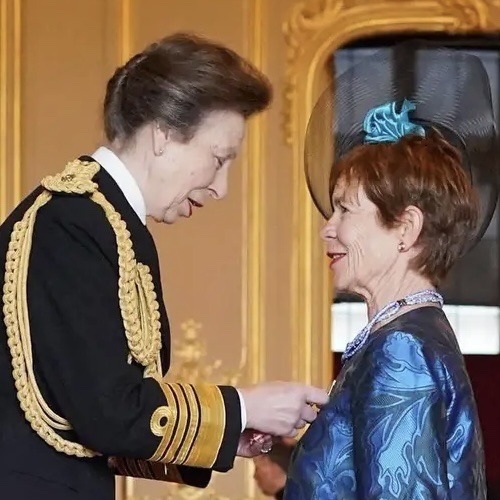
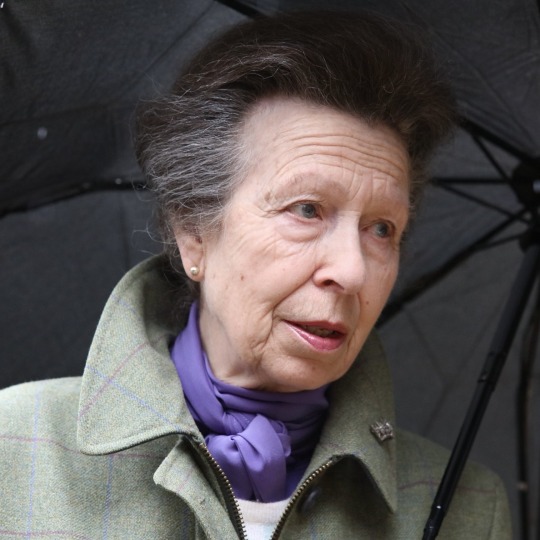



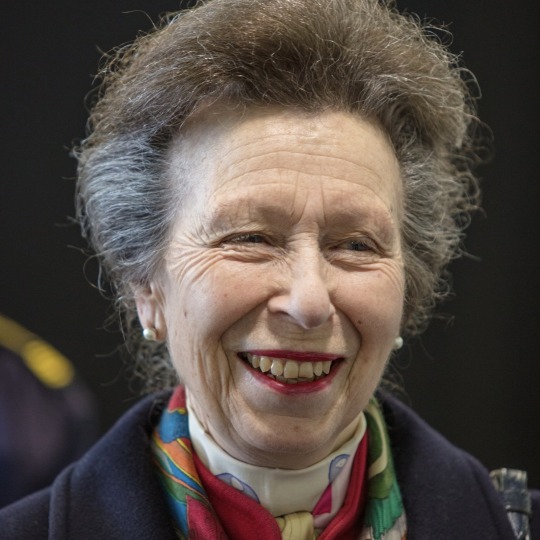
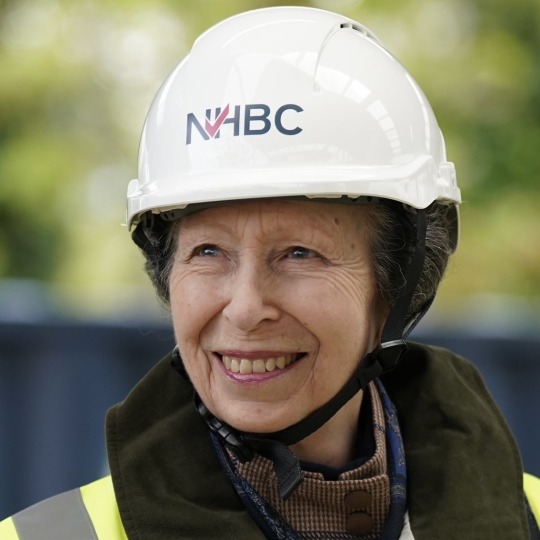
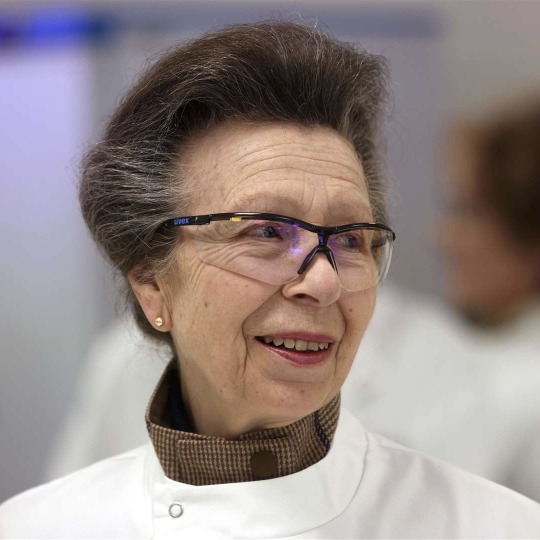
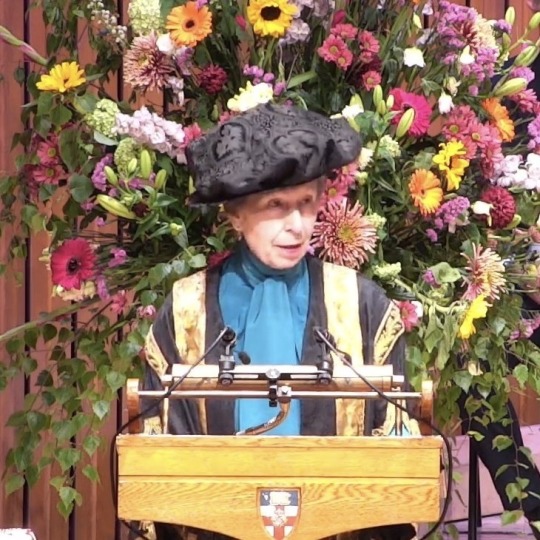
The Princess Royal’s Official Engagements in April 2024
06/04 As President of the Working Clumber Spaniel Society, held a Training Day to mark their 40th Anniversary at Gatcombe Park. 🐶
09/04 On behalf of The King, held an Investiture at Windsor Castle.🎖️
With Sir Tim Opened Tideway’s Chelsea Quay, on Chelsea Embankment in London. 🌊
With Sir Tim, As Master of the Corporation of Trinity House, attended the 70th anniversary of Re-Hallowing Service at St Olave’s Church, followed by a Reception at Trinity House. ⛪️🍾
10/04 Visited Helmshore Mills Textile Museum in Rossendale, Lancashire. 🧵👕
Visited Trawden Village Community Projects in Trawden near Colne, Lancashire. 🏡
Visited HMS VENTURER in build at Venturer Hall in Fife. ⛴️🏴
11/04 In Northern Ireland Princess Anne; 🇮🇪
Visited Fleming Agri Products Limited in Derry. 🚜
Visited Londonderry Port and Harbour Commissioners, to commemorate its 170th Anniversary. 🚢
Visited the South West College Erne Campus building in Enniskillen. 🏫
Visited the renovated Enniskillen Workhouse in Enniskillen. 💼
As Patron of Maritime UK, attended the Northern Ireland Maritime and Offshore Cluster launch Reception at Belfast Harbour Office. ⚓️🥂
12/04 As Royal Patron of the Motor Neurone Disease Association, attended the Northern Ireland Conference at Dunsilly Hotel in Antrim. 🇮🇪👨🦽
As Patron of Tenovus Cancer Care, visited a Mobile Support Unit at Bronglais General Hospital in Aberystwyth. 🏴🏥
15/04 With Sir Tim As the Former President of the Royal Association of British Dairy Farmers, presented The Princess Royal Award and Royal Dairy Innovation Award at Gatcombe Park. 🐄🥛🏆
16/04 As Royal Patron of the National Coastwatch Institution, this visited Fleetwood Station in Fleetwood, followed by a Reception at Marine Hall. 🔎🌊
As Patron of the Pony Club, visited Wrea Green Equitation Centre in Preston, to mark the 25th of the Pony Club Centre Membership Scheme. 🐴
As President of the Carers Trust, visited Sefton Carers Centre in Liverpool, to mark its 30th anniversary. 🧑🦯🩺
17/04 On behalf of The King, held two Investitures at Windsor Castle. 🎖️
18/04 Attended the Lord Mayor's Big Curry Lunch at Guildhall. 🍛
As President of The Duke of Edinburgh's Commonwealth Study Conferences, held a Dinner at Buckingham Palace for the President's Council and the Caribbean-Canada Leaders' Dialogue. 🗺️🍽️
19/04 On behalf of The King, held an Investiture at Buckingham Palace. 🎖️
21/04 Unofficial As President of the Working Clumber Spaniel Society, hosted a test day at Gatcombe Park. 🐶
22/04 As trustee of the council of St George’s House Princess Anne;
Attended a council meeting at St George’s House. 💼
Attended a Lecture in St. George's Chapel. 🎓
Attended a Dinner at the Vicars' Hall. 🍽️
23/04 On behalf of The King, held two Investitures at Windsor Castle. 🎖️
As Royal Patron of the Special Boat Service Association, held a Dinner at Windsor Castle. 🚤🍽️
24/04 As President of the Riding for the Disabled Association, visited the Cavalier Centre, and presented The King’s Awards for Voluntary Service in Farley, Much Wenlock. 🐎🏆
As Patron of Save the Children UK, visited the Lyth, Ellesmere, the birthplace of Eglantyne Jebb. 🏠
Visited the Jebb Memorial Garden at Cremorne Gardens in Ellesmere. ⛲️
25/04 Attended "DNA Day" at Illumina Centre in Great Abington. 🧬
Opened the National House Building Council's Apprenticeship Training Hub at Histon Football Club. 👷
As Patron of the Royal College of Midwives, visited Hinchingbrooke Hospital Maternity Unit. 👶🏥
As Colonel of The Blues and Royals (Royal Horse Guards and 1st Dragoons), visited The Household Cavalry Mounted Regiment at Hyde Park Barracks. 🐴💂
As Chancellor of the University of London, attended an Institute of Commonwealth Studies Reception at the Senate House, to mark its 75th anniversary. 🎓
27/04 As Admiral of the Sea Cadet Corps, attended the National Drill and Piping Competition at HMS Raleigh. 🫡⚓️
30/04 As Guardian of the Chaffinch Trust, attended a Reception at the Reform Club. 🥂
As Chancellor of the University of London, attended a Graduation Ceremony at the Barbican Centre. 🎓
As Commandant-in-Chief of the First Aid Nursing Yeomanry (Princess Royal’s Volunteer Corps), presented Coronation Medals at Wellington Barracks in London. 🫡🎖️
Total official engagements for Anne in April: 39
2024 total so far: 171
Total official engagements accompanied by Tim in April: 3
2024 total so far: 32
FYI - due to certain royal family members being off ill/in recovery I won't be posting everyone's engagement counts out of respect, I am continuing to count them and release the totals at the end of the year.
#aimees unofficial engagement count 2024#april 2024#always there to support his wife#not all engagements are listed on here#if you would like a full list plz dm me 🥰#excited for next month#two overseas visits and the start of the more summery engagements!!!#princess anne#princess royal#tim laurence#timothy laurence#not as many as previous months because she took a few days off after easter
51 notes
·
View notes
Note
Hello!
Really having lots and lots toku thoughts today and eager to ask or say stuff
I actually keep thinking of Naoto with gunshot wound. I’m also thinking what if it’s completely other Naoto from the ending entirely but he still has them. I’m wondering what Tatsuya would think if they met. If he saw. Don’t know how he would since bird seller Naoto is hidden behind two layers of clothes lol I am thinking it. What did you do to me omg /affectionately
I’m also thinking, was Daiki that OOC in Super Hero Taisen? It’s always so fucking funny how he went I’m blowing up Earth because of his Tsukasa Problem™️ so I never thought if that was unusual of him (re: bro, you are supposed to protect it). But. Like, listen, if pink/black leather bombshell is leaving you for a sexy pirate, what else can you do, really. Daiki has been putting up with it for years, and not that successfully so
Also want to ask, haven’t finished enough toku to know but are there any other aro and/or ace characters to headcanon except like Tarou out of all people or Goseigers being angels who are more or less above it even if they have stuff going on (coughs in Agri’s direction, the ultra super puper gay). Sighs, I love Tarou aro lol and his yaois with monkey 💙 are so fun too. Actually, now that I think about it, monkey isn’t much of a human too really, maybe they’re both above romance, not like they need it. I also saw edit of monkey’s actor on some BL yesterday and when a guy smacked him with a vibrator, I thought, “That’s what Momoi does to Saruhara every single day”
the Timeranger finale credits scene is so interesting to me because truly What Does It Mean. In my mind all of the appearances were non-canon but I kind of like the idea that Ryuga's wibbly-wobbly time-wimey history-rewritey bullshit kinda restored Naoto into the timeline but as a different man with a different life story than the one who died. Like maybe after he and Tatsuya parted ways he realised that he was never going to have the power of the born elite and instead of being radicalised by that he instead accepted it and decided to make the best of his own life. Instead of chasing medals he got a job cleaning up bird shit and feathers at the local pet shop, instead of dedicating his life to climbing the paramilitary ladder he proved himself a reliable hand and now manages the pet store by himself... I don't think Tatsuya would recognise him. Even if he did, I don't know if he'd be able to handle it. His relationship with Naoto and how it ended both times was clearly so traumatic to him, seeing a guileless stranger with the face of a man who died in his arms would be alien. It wouldn't be healthy. There's no happy ending for either of them together, but apart, maybe.
also yeah Daiki is the #1 fumbler in the universe it's pretty impressive. Like he didn't stand a chance against Marvy-chan to begin with but the real tragedy there is that Daiki thinks they're confirmed boyfriends and that he doesn't need to seduce Tsukasa because he's already done it but Tsukasa straight up doesn't know who he is any more. yknow how so many straight dudes basically stop even pretending to actually like their wives the second they get married. that's Daiki lowkey lol.
and tbh I think there are a LOT of aro/ace-adjacent readings in toku in that for the most part romance isn't rly a thing in a lot of them. Tarou and Alata are probably the two I would say most confidently are ace (and aro on Tarou's side... idc what easily-baited-by-INOUE-of-all-people fujoshis say, that shit with Sonoi was NOT romantic on his end at all. there are monster pairings that had more romantic tension from the hero's side) with the majority just having no romantic storylines (in their actual shows at least... I would have said Takaharu was aroace but UMM WHY DID HE SHOW UP MARRIED WITH CHILDREN?)
but yeah monke very cute also one of the most genuinely monke looking boys toei has ever cast which is impressive seeing as. well. have you watched go-bus. that's a heartily monke boy there for sure
7 notes
·
View notes
Text
A team of scientists from Agriculture and Agri-Food Canada and the University of Saskatchewan is trying to restore the bison to its original place in the prairies.
The project aims to preserve the bison genome and protect them from common bovine diseases.
The project, called the Genome Canada’s Bison Integrated Genomics, is still in a pilot phase, but it has already seen great results.
Muhammad Anzar, a research scientist with Agriculture and Agri-Food Canada, explains that the team has already managed to breed new bison.
“We are using the frozen semen and embryos for embryo transfer and artificial insemination in the field. We have successfully produced new healthy calves in the University of Saskatchewan.” [...]
Continue Reading.
Tagging: @politicsofcanada
241 notes
·
View notes
Text
China’s Devastating Influence in the Brazilian Amazon

China’s extensive reach is penetrating further into the Brazilian Amazon. The Maritime Silk Road, a key component of the Belt and Road Initiative; the infrastructure and management of electrical grids; technology sector control, and rare materials exploitation are the main forms of this expansion that threatens to compromise the green lung of the Earth. The consequences are worrying, including environmental degradation, labor exploitation, harm to indigenous communities, and even the destabilization of Brazil’s strategic sectors.
In March, a Beijing delegation visited the town of Barcarena, in Pará state, to prepare the ground for the Maritime Silk Road project in the Amazon. Chinese state-owned company Sino-Lac Supply Chain Co. Ltd. wants to invest in the Amazon port sector, both in the states of Maranhão and Pará, to control the entire export chain to China of Brazil’s main agri-food products, especially soybeans and meat. The project involves the creation of a logistics structure, managed by China, including storage of goods, customs, and sanitary measures to enable maritime transport to the motherland. Sino-Lac has also signed agreements with the Federal University of Amazonas to produce fertilizers in the region.
“China’s encroachment in the Amazon is cause for concern. Beijing has also shown interest in scientific research, bioeconomy, and even fertilizer processing. The problem is that China is known for its predatory exploitation, which, without adequate regulation and control, poses significant risks for Brazil, from creating dependency dynamics to even monopolizing entire market segments,” Jorge M. Lasmar, professor of International Relations at the Pontifical Catholic University of Minas Gerais, told Diálogo.
Continue reading.
#brazil#brazilian politics#politics#environmentalism#china#environmental justice#international politics#amazon rainforest#image description in alt#mod nise da silveira
8 notes
·
View notes
Text
Blog 1: Current Relationship with Nature
Hey everyone! I'm currently attending my fourth year at the University of Guelph. I am majoring in Environmental Sciences and minoring in Ecology, and I've loved every minute of it. I am also a co-op student which has allowed me to work in multiple different environments and positions, majority of which have involved a large amount of field work.
In regards to the prompt for this week's post, I've always greatly enjoyed being outdoors and immersed in nature. From camping and hiking in the summer months to skiing and snowshoeing in the winter alongside my family, nature has always been a major part of my life. I've always had a strong passion for the environmental sciences, which is why I decided to pursue it in my post-secondary education. I think a lot of this passion was strongly tied to how often my family involved me in the outdoor activities I mentioned above, and I think it helped to gain an appreciation for nature that I feel many people nowadays do not have.
My first big camping trip was when I was 10 months old where my parents and I visited 4 Ontario provincial parks along our long road trip to Thunder Bay. These included Craigleigh, Windy Lake, Agawa Bay (aka. Lake Superior Provincial Park), and Kakabecka falls. Since then, I have visited and camped at 28 Ontario provincial parks, and 4 national parks in Canada. Of these, my favourites have been Algonquin Park, Bruce Peninsula National Park, Grundy Lake, and Grasslands National Park (SK). It's safe to say that camping is a big part of my life and it has also had a major role in shaping my current relationship with nature. I have greatly enjoyed partaking in hikes and kayaking trips across the lakes during these, and it's always such a breathtaking experience (literally and figuratively). I love the views that the hikes provide, and I always spend a long amount of time taking everything in, and how beautiful nature can be. Often, the views can make you feel small, which is very humbling experience that makes you appreciate nature and, in my experience, creates a sense of responsibility to protect it. My many kayaking trips have provided similar experiences, and I love the many different plants and animals I encounter on these journeys.
Throughout my co-op experiences, I have been able to pursue a position that with a large focus on field work. My favourite has been this past summer which I spent in Indian Head, Saskatchewan working with Agriculture and Agri-Food Canada in their Agroecosystems section. Saskatchewan was one of the best experiences of my entire life, and I am so grateful to the people who made the trip, and the job, possible. While I was out there, I got to know the 6 other students I was working with and formed strong bonds with them which I will always cherish. I also had the opportunity to explore this province through my field work as well as outside this work and was able to appreciate the different geography and flaura and fauna of the area. It was during the trip out to my placement that allowed me to finally achieve my goal of visiting all 10 provinces of Canada as my last three I needed to visit were Manitoba, Saskatchewan, and Alberta. I was able to take some time off during my work term to visit Jasper, Alberta, and it was such a beautiful and almost otherworldly experience seeing and experiencing the quiet of the mountains. On my journey back to Ontario, I was also able to stop by Lake Michigan to complete my other goal of visiting all 5 Great Lakes. My next goal is to visit all 3 Territories. Overall, this past summer was one of my favourites, and it deepened my already strong relationship to/appreciation for nature, and I would highly recommend and encourage similar experiences of other people, especially co-op students.
I could likely fill a whole book an my relationship with nature, most of which would consist of my favourite stories and memories of my "adventures", but this post is getting a little long (lol). To answer the question "who offered me 'a sense of place'," I would say my parents who allowed me to visit the many places I have been to. I have so much love and appreciation for both my parents and the experiences they provided for me, and I hope that one day I can do the same for my children. Without them and their passion for camping and exploring what all of Canada has to offer, I would likely not have developed the appreciation for nature that I currently have. Overall, my main takeaway message from this would be that being out and present with nature is an important part of a persons' life, and I strongly advocate for more people to allow themselves time to take a walk in the woods, or even just a regular hiking/walking trail in their city to be able to be present and appreciate nature.
Enjoy some photos I've taken of my travels this summer below :)


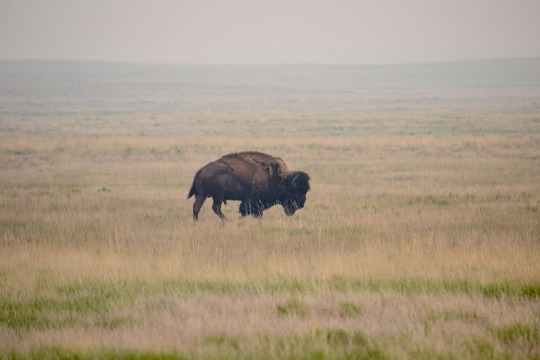
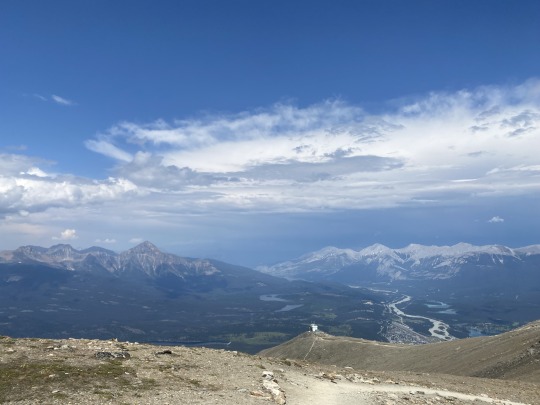

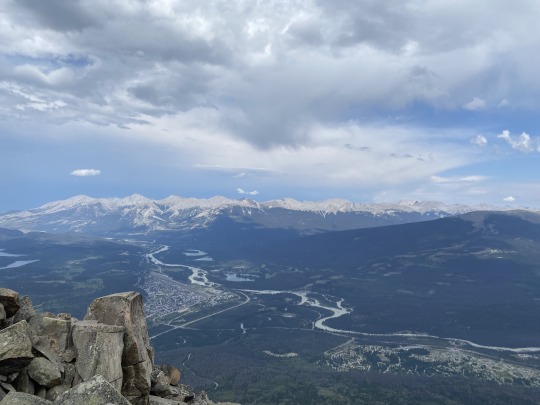
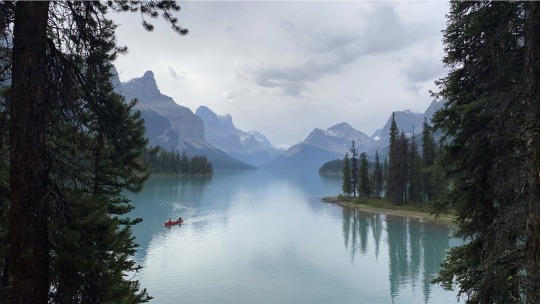
15 notes
·
View notes
Text
Some details on the economics of my space opera universe:
There is no faster-than-light radio or communication. All communication is done by extremely fast courier ships that transport data. Even then, information can take weeks or even months to travel from one side of the galaxy to the other. There is no such thing as the internet (though there might have been in other times) if you want to communicate, you have to be there physically.
Individual planets do often have fast communication networks. Ironically, in a way, planetary living might feel faster than life in space.
The most important resources are Non-Newtonian Elements (NNEs), which is a broad category for elements, molecules, or other such structures that do not conform to the regular laws of physics. They are the ones that are able to stabilize aether currents to allow faster-than-light travel, to siphon dark energy to boil water use in industry, and build the frame for great megastructures. among so many other uses, many very esoteric and unknown but to the most especialized engineers.
NNEs are as a rule difficult to find and extract. They are located near black holes, in the atmosphere of brown dwarfs, beneath panthalassic worlds covered in water... And to process them you need complex machinery and supply chains, many involving other NNEs themselves.
As such, these industries are either on state hands, or in the hands of galaxy-spanning megacorporations. (I am speaking in mostly human terms here, other civilizations have different economic systems)
Early space colonies (I dislike the term but let's go with it) were self sufficient, created by generation ships that slowly roamed the galaxy, "seeding" colonies and then moving to the next. So these "old worlds" often have diverse, well established economies.
While my original idea was to make slower-than-light relativistic generation ships, now I'm thinking that perhaps those huge ships were the first to be able to have FTL (if painfully slow), only to later be replaced by smaller, faster ships
FTL space has a *terrain* to it. FTL flight is not even; you can sometimes ride currents to the other side of the Galaxy faster than neighboring stars. There are regions hard to navigate and fast aether currents that span the galaxy. Most of the oldest and well known worlds are located as strings of pearls in those trade routes; the ones in the junctions of the routes have been settled by milennia with long histories.
Sometimes, aether currents change, with the corresponding economic consequences...
This is an economically unequal galaxy. It's not the planets richest in NNEs who are superpowers, rather it's those who are able, for one reason or other, to control their trade or production. While at first the pace of space settlement was mostly equal, those *nations* who were able to control the big NNEs sources for one reason or other quickly set the economic field on their favor. They often are able to sustain high standards of living based on their economic (and political, social, cultural, sometimes military) power over other worlds.
Thus, worlds especialized in a single industry have appeared. Or rather, have been forced into the role. Dependency theory and all that. "Agri-worlds" supply the big ecumenopolises, worlds with luxury products are converted for max production, strip-mining (asteroid mining is the main industry, but some NNEs are only found in certain worlds)... And as such, these worlds mostly import their manufactured goods from elsewhere. And are often home to exploited populations.
Yes, this does lead to the rise of revolutionary and socialist (both in the *human* marxist sense and other alien variants) movements and states. These have to grapple with the facts of ensuring a fair distribution of resources in such a vast galaxy (even small polities have this problem), to which there have been many theorical and practical answers.
In fact, there does exist the dream of the Socialist Galactic Republic, but it seems far away, and currently, megacorporations and unfriendly states seem to have the upper hand. Not everywhere, though.
Meanwhile, the smaller or more remote worlds who are not a big part of this whole economic chain often depend in their merchant marines for trade. For smaller deliveries, private travel, and such, there are countless "free traders" with small indepedent ships that take care of those routes.
Technology is practical and little automated, designed to be simple so it can be used by as many diffrent species as possible. Spaceships look a lot like WWII planes rather than sleek shiny futuristic spaceships. On an aesthetic note, they are often very colorful. Even the largest mega-cargo ships are painted with the liveries of their company, and small free traders decorate their ships with grafitti. The interiors often have small trinkets and pieces of home, and very often, home is the spaceship itself. I fucking hate grey spaceships.
There's actually no large scale galaxy-spanning wars. Moving a warfleet from one end to the Galaxy is ludricously expensive, and invading and controlling a world of billions a titanic challenge. The main powers of course keep large defense fleets, since bombardments from orbit are easy (and tragically have happened with genocidal consequences).
But there's lot of "police actions", anti-"piracy" (and often anti-revolutionary) patrols, guerrilla warfare, small scale skirmishes, showing the flag on trade routes... it's a whole different kind of warfare. If I had to say an equivalent, it's more like the ancient Mediterranean than any modern equivalent.
There's, as you can guess, no such thing as a "galactic empire" or republic or union or anything. There is a galactic "alliance" that sorts of keeps a semblance of international order (like the UN but very much weaker) and trade (often favoring the great powers) and supposedly, could coordinate actions against galactic threats.
(I am thinking in fact there might be a menace like rogue AIs or other stuff, in fact, there might be open war in some places, but that's still up in the air)
There is NO Universal Translator. If two different species meet, they have either to learn each other's language (that sometimes include visual, physical, olfactory, etc. elements, different sound frequencies) or agree in a "trade" language, and there are a few so widespread that most space-people understand it, but they are not universal. Inter-species communication is an industry on its own.
Even more, there's different languages in each civilization. Take the humans, for example. There's Tandar (from Standard) a very distant descedant of Mandarin with plenty of English and other borrowed vocabulary and a computer logical *system*, that is so widespread some people consider it to be the "human" language (and it's indeed one of the main "trade" languages, at least for visual and auditive species). But there are worlds with millions of humans who speak wholly different languages, with each world with its own dialects (and subdialects). These worlds have often been settled by generation ships, who have kept ancient human languages and dialects (like say, Kurdish, Tibetan, Rioplatense...) alive and often are different from the planetbound ones. And of course, there are many humans raised for generations in *alien* worlds, who speak languages with no relation at all with Mother Earth, and even find those alien and confusing.
And that's just humans. There are over four thousand and some spacefaring species on the Galaxy...
#there's more to talk about but I'll leave it at this for now#cosas mias#any parallels with the real world are often intentional#space opera#worldbuilding#I don't want this to be reblogged because I'm developing it as my own setting but feel free to watch!
71 notes
·
View notes
Text
Sororitas Attack


Universe : Oproniis
Location : Hero Planet - Torturor Island
Characters : Mildred, Nerilla, Rufina
kinktasy.blogspot.com/
www.pixiv.net/en/users/6581837…
bdsmlr.com/blog/Majystine
============================
Using the portals Torturor use to catch new slaves from other universes, Sororitas attacked his island. Three of them managed to enter the island...
NERILLA : Sisters ! Let's destroy this cursed place where perversion and lust has cut them from the God-Emperor light !
MILDRED : For the God-Emperor ! For the Ecclesiarchy !
RUFINA : Let's burn those heretics !
But they failed, somehow they were overpowered and quickly captured. Maybe it was a bait from Torturor himself to capture more Battle Sisters.
They woke, chained and suspended in a large and hot room. The sisters were nearly naked, sweating.
============================
FROM LEFT TO RIGHT :
SISTER MILDRED : Mildred was the fourth born of a noble family and was sent to the sisters at a they young age. Tall and wise, silent most of time, Mildred was an expert in heavy weaponry.
Following an old Terran tradition, the nobles family part their children between the Imperium institutions :
The first born inherit the fief and become a governor.
The second born goes to the army and joins the Astra Militarum as a high rank officer.
The third born goes to the navy and joins the Imperial Navy as a captain.
The fourth born goes to the church. In Mildred's case, as a woman she could be sent to the Sororitas as a more prestigious gift from her family.
SISTER NERILLA : Orphan taken from a Hive world, she is an hardened warrior and a skillful leader. She is proficient with any weapon. She would have quickly become a Superior Sister if she hadn't been captured by Torturor.
SISTER RUFINA : Orphan taken from a Agri world, smaller than most sister. Some says one of her ancestors was a ratling. "What the Emperor didn't gave me in height, he gave me in boobs !" Not the brightest, not really competent, easy to lose her temper, but lucky in most of her missions, she survived even desperate situations against all odds.
2 notes
·
View notes
Note
How many years you caring about this AU? And what concept of your AU through? I am just have my AU too - its crossover between Angry birds movie and Undertale, and I rarely see people, which making Angry birds AU (especially with such forgotten characters like Hockey bird)! I wish you luck with developing this AU!
I actually have 3 AUs in total
Angry Birds Feather Fever
Project Farmageddon
Angry Birds Daybreak
Feather Fever is about 6 years old while the other two are about 3 years old.
ABFF is my main AU where it is just my interpretation of angry birds lore, crossing over the movies and the games. There is a gijinka version of this AU that has its own rules but I would call it "just an expansion" of this one and not it's own universe.
Farmageddon is my attempt to make Agri Birds a reality / answering the question, what if Agri Birds was made today?
And Daybreak is basically just "what if birds had guns gameplay?" And would be similar to Mario + Rabbits but this AU is very underdeveloped so I have no art for it.
I do plan on making Project Farmageddon and AB Daybreak into actual games while Feather Fever will be turned into an animated series on YouTube, depending on whether or not I go through with it. Development is slow on all of them because of school but for my main AU, I have the basics on what I want so far.
Thank you very much, I am rather intrigued by your AU, a crossover between Undertale and Angry Birds does sound interesting.
5 notes
·
View notes
Text
This Black History Month, Feeding America is celebrating the Black inventors who had a profound impact on our mission.
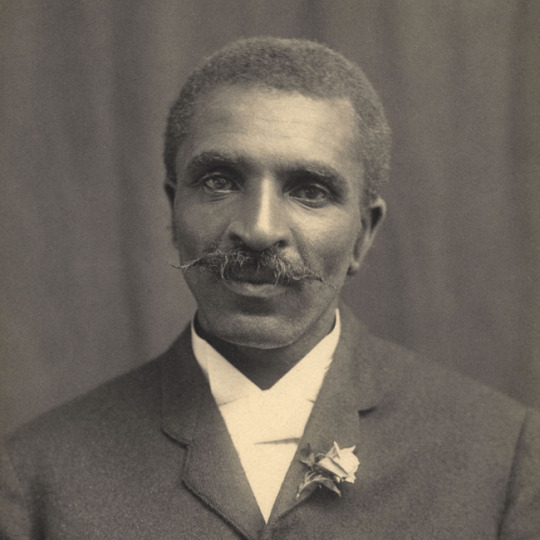
People like George Washington Carver, also known as Mr. Peanut for his revolutionary work creating new products from a single crop, the lowly peanut. And Alice H. Parker, a Black woman who never got the credit, or the fortune, for inventing what we now know as zoned home heating using natural gas. These trailblazers helped America transition to a major agricultural exporter. Their inventions helped farmers increase the harvest to the point that American farmers now feed the world, and those in need. At Feeding America, our work is tied to moving food from farmers to food banks. It is our mission to end hunger in America and many of these Black inventors helped pave the way for U.S. farmers to grow more food.
George Washington Carver (1861-1943)
Born a slave in 1861, George Washington Carver went on to become one of the most prolific agri-business inventors in American history. He invented crop rotation, and more than 300 uses for the peanut. including Worcestershire sauce, cooking oil, and cosmetics. His work is at the foundation of modern farming. It is because of crop rotation and the introduction of grain crops like corn and soybeans, that Feeding America can help our food banks provide for our neighbors in need. Carver helped American farmers feed America.
He was the first African American to earn a bachelor’s in 1894, then a master’s degree in agricultural science from what’s now known as Iowa State University. Carver invented crop rotation. Farmers were struggling to grow anything after years of harvesting a single crop. Carver suggested they plant peanuts, soybeans, and sweet potatoes which would add nutrients to the depleted soil. This method gave farmers a second chance at becoming leaders in agricultural exports.
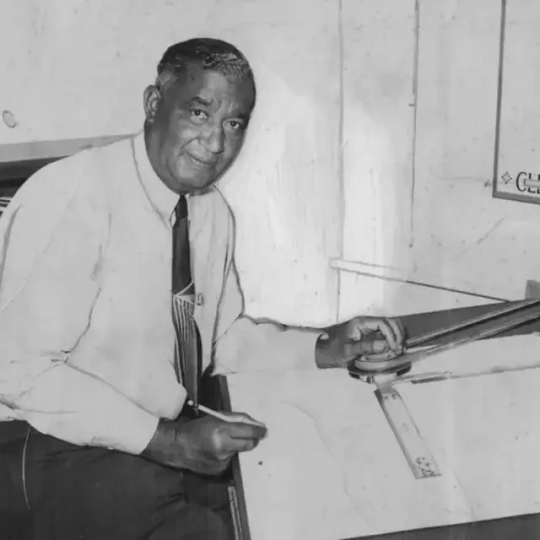
It would be impossible for the Feeding America network of food banks to get the much-needed food they need to nourish feed our neighbors without the work of this man, Frederick McKinley Jones. He invented refrigerated trucks, which help food banks provide fresh produce and meat to their communities safely. And, because of his work, food banks can rely on our massive distribution network to transport fresh produce from farmers across the country on a regular basis. In fact, our network moved 3.8 billion pounds of dairy, produce, and meat -- perishable foods that wouldn’t be available were it not for refrigerated trucks, trains, planes, and ships.
His work revolutionized global logistics. It’s at the heart of what’s now known as “the supply chain.” That is, he made it possible to transport perishable food safely from one place to the next. He co-founded the U.S. Thermo Control Company (Thermo King) which was worth millions by 1949 and later acquired by Westinghouse.
A self-taught mechanic and World War I Army veteran, Jones received more than 60 patents for refrigeration as well as X-ray machines, engines and sound equipment. He was the first African American to receive the Presidential National Medal of Technology.

A farmer and a free man before the Emancipation Proclamation, Henry Blair invented two devices to increase agricultural productivity. The first was the corn planter in 1834, and the second was the cotton planter in 1836. His goal was to reduce inefficiencies from manual labor. The Mechanics Magazine published August 6, 1836, described it as “saving the labor of eight men.” Blair’s discoveries helped farmers grow more food for the masses, not just their local communities. For Feeding America, farmers are at the heart of what we do. A large percentage of the food our neighbors receive at their local food pantry is packaged right on the farm where it's grown thanks to our partnership with the USDA. Inventions like Blair's are what fuel the heartland.
While not at the heart of our mission, Feeding America often helps people in need who have to make the tough choice between paying for heat or buying food. During cold winter months, there are many who choose to pay their heating bill and forsake food. They turn to their local food pantry as a stop-gap. The Feeding America network of food banks provides a safe, consistent place for families in need to access food.
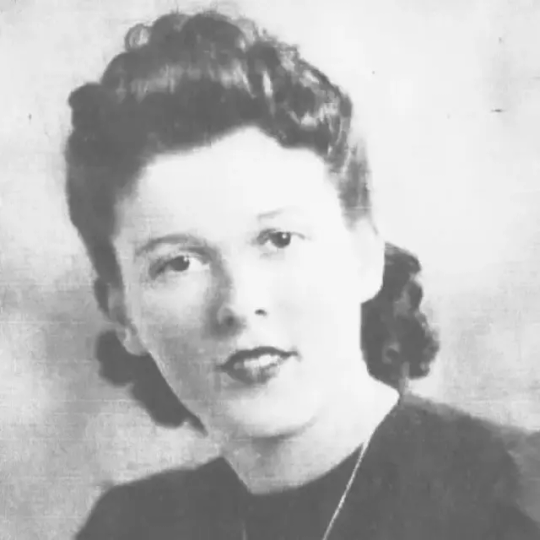
Alice H. Parker, the mother of modern heating, invented the gas-forced air heating system because she too wanted to provide a safe place for families.
Before her invention of the gas furnace, home heating wasn’t safe. Homes were heated with coal or wood-burning fireplaces. Parker was the first to develop natural gas as a cleaner, more efficient alternative to home heating in 1919.
An unsung hero of home heating technology, she revolutionized how we live today. But Parker didn’t have an easy go of it as a Black female inventor. The Civil Rights Movement had yet to give African Americans their rights and the Women’s Liberation Movement was further off. She never profited from her invention. So, we salute her. We know there are many families that struggle with tough choices these days with the rising costs of home heating. But for those who have a warm place to sleep and the modern advances of zoned heat, the next time you adjust the thermostat, say a silent thank you to Alice H. Parker.
5 notes
·
View notes
Text
Addressing Response to Customer Difficulties: Starting Point
What are the common problems encountered by CMU students nowadays?
In this journal, you will learn about our journey of finding problems and how we were able to come up with this particular product in order to achieve a more efficient and productive academic life for college students.
The first thing we did during the first week was to create a plan on how we will conduct our interview and how many prospective people we need including the college they should be from. The team agreed on making interviews by pair; one person will do the asking while the other will do the documentation.
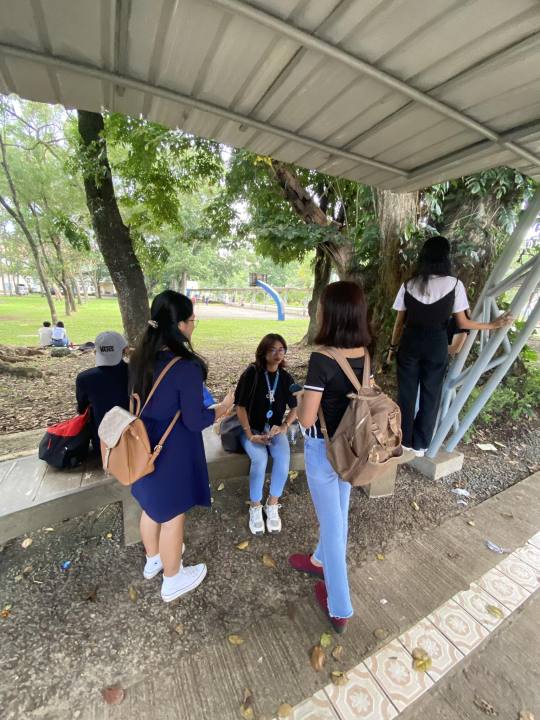
After some interviews, we gathered all the information and shared it together with other members.
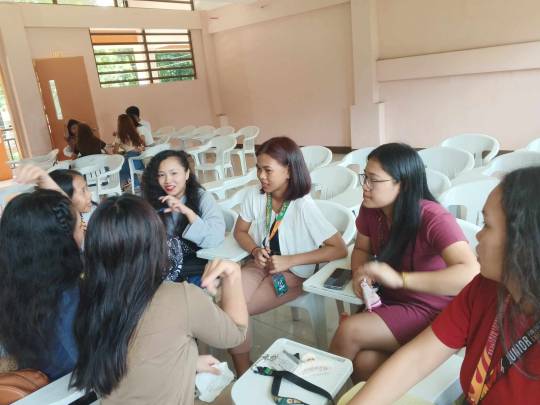
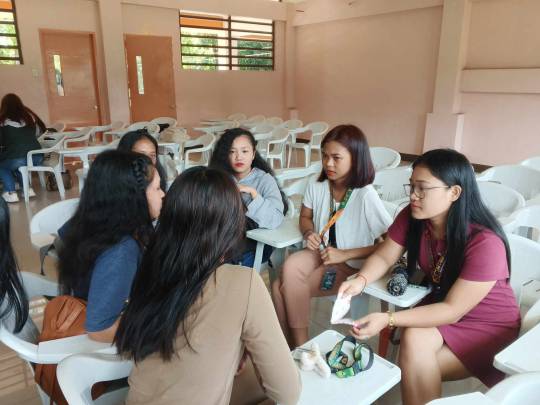
After giving it some thought, we took notes of the problems raised and created possible solutions to each of them. The next day, we interviewed another group of people for further investigation. The following is the summarization of the data gathered from respondents.
Data Gathered:
2 males (Agriculture Students) — lack of trash bins in Agri benches.
1 male (from CAS) — lack of trash bins and CR (no water)
1 female (from CFES) — CMU market is too far for printing documents.
1 female (from CBM) — CMU market is too far for printing documents.
2 female (Graduate students) — Financial problem.
1 female (from CVM) — CMU market is too far.
1 female (from COEd) — Slow internet.
5 females (from CAS) — Lack of benches.
A total of 14 customers are interviewed.
And then we all gathered together to brainstorm and discuss our possible plans.
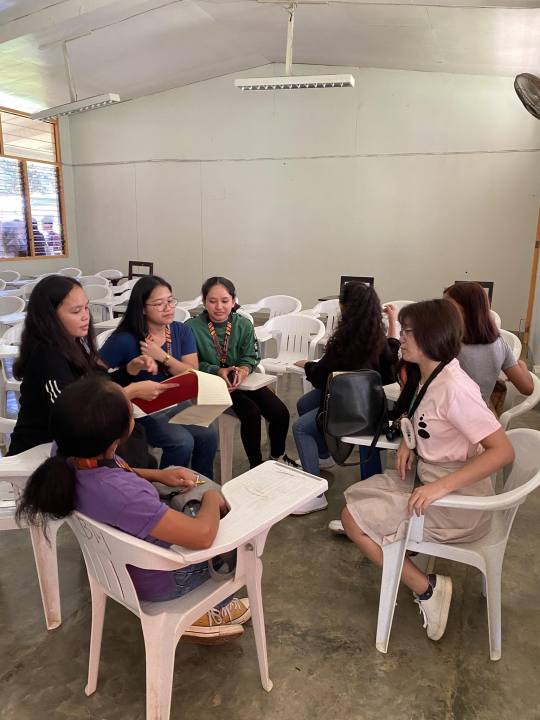
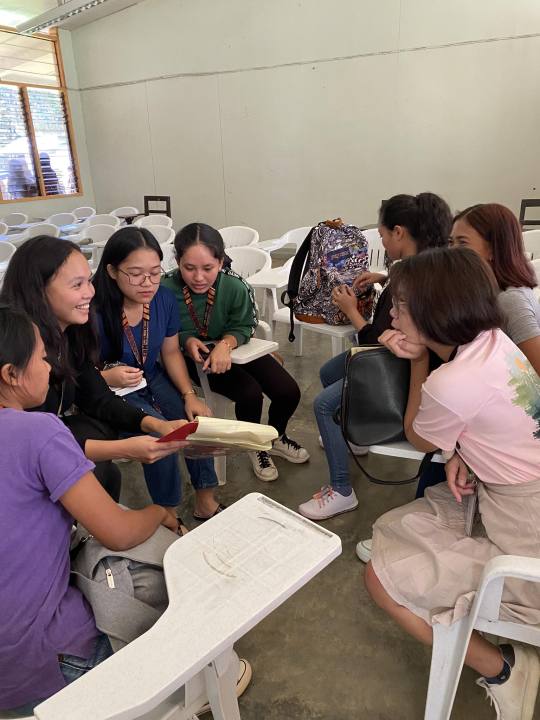
In consideration of the datas we have gathered while conducting interviews, we noticed that there was a diverse array of problems from our customers' answers. The group decided to formulate possible solutions to the problems while also considering the opportunity to profit. The most significant one was financial problems, our chosen solution for this was to construct or create a platform for a marketplace where we will play the role of a broker. It aims to give opportunities for students to:
Dispose of their old possessions through selling second-hand items(books, print-outs, yoga mats, swimsuits, etc.)
Allows them to buy items at a lesser price.
Easy access for available boarding houses in the area.
However, it requires a lot of estimations and assumptions and we found out that Central Mindanao University already has an online marketplace.
Another best alternative we are able to formulate was the solution to the distance of the University Market in regards to printing services. We came up with the decision to choose the printing problems to be addressed. After considering other variables, the team has made an idea of providing a self-service, coin-generated, vendo printing machine rather than using a regular printer which needs someone to operate and provide assistance for all the time. It is super convenient and can be less hassle since we only need to provide maintenance for it for once in a while. For that cause, we did research if this product is available in the market or is yet to be created.
To find out that it is currently unavailable in the local market, we are advised to manufacture the product ourselves, because formulating it on our own and managing its service function would dampen the fixed cost, causing us to hardly match the value of the product in the value the customers can afford to give which can dampen the possibility of profitability. With that in plan, we established steps to properly manufacture the product and as to where we will market it.
The group formulated the following measures:
Collaborate with people with expertise in the making of the product (IT technicians/ Engineers)
Interview experts as to the costs of manufacture, the processes and licenses needed to manufacture the product.
Have the estimation as to the possibility of profitability or determine the economic value of the product in a certain point of time.
Make a model or prototype of the product, as to the process of using it.
Devise a clear plan on whom to sell the product.
To conclude:
Team work and Cooperation with the team
Work with Unity, and Diverse Perspective
Adaptability
Constructive feedback
Having this kind of behavior and attitude makes the team create a unique and successful product and/or service, it also helps the students life easier in terms of printing their outputs. Moreover, the team should not waste time on thinking of innovative ideas that can be useful not only for students but also a product and/or services that we can still benefit in the future.
2 notes
·
View notes
Text
Your heart I hold so close to mine
read it on the AO3 at https://archiveofourown.org/works/44808919 by myideaofbeautiful Obi-Wan's dreams of becoming a Jedi are crushed when he gets sent to the planet Bandomeer to join the Agri-Corpse. After getting captured and enslaved to work on a deep-sea mining platform he is saved by Jedi Knight Anakin Skywalker. Anakin is sent to the planet Bandomeer to assist Master Qui-Gon Jinn against the dark Jedi Xanatos. He didn't expect to meet Obi-Wan Kenobi. Impressed by the boy's skill Anakin decides to take him on as his apprentice and together they return to Coruscant to begin Obi-Wan's training. 6 Years Later: Anakin Skywalker receives a distress call from an old friend. He and his padawan set off to the planet Naboo to save Senator Padme Amidala from the Trade Federation's invading forces. It's suppose to be a simple rescue mission, but as always nothing is ever simple when Anakin Skywalker and Obi-Wan Kenobi are involved. Matters are further complicated by the growing rift between Master and Apprentice. As secrets are brought to light and new enemies make their appearance both Anakin and Obi-Wan will need to face truths neither of them expected or dared to hope for. Words: 5518, Chapters: 1/4, Language: English Fandoms: Star Wars - All Media Types, Star Wars Prequel Trilogy Rating: Explicit Warnings: Creator Chose Not To Use Archive Warnings Categories: F/M, M/M Characters: Obi-Wan Kenobi, Anakin Skywalker, Qui-Gon Jinn Relationships: Obi-Wan Kenobi/Anakin Skywalker, Padmé Amidala/Anakin Skywalker Additional Tags: Alternate Universe - Canon Divergence, Role Reversal, Jedi Master Anakin Skywalker, Padawan Obi-Wan Kenobi, Slavery, Canon-Typical Violence, Force Bond (Star Wars), Master & Padawan Relationship(s), Slow Burn, Angst, Planet Bandomeer (Star Wars), Canon Divergence - Star Wars: The Phantom Menace read it on the AO3 at https://archiveofourown.org/works/44808919
2 notes
·
View notes
Text
IRCC Expands Post Graduate Work Visa (PGWP) Eligible Fields of Study in 2025
Canada has introduced significant updates to its Post Graduate Work Visa (PGWP) program. As of 2025, the list of PGWP-eligible fields of study now includes Education as a new category. This expansion aligns with the country's commitment to addressing labor shortages and supporting international graduates in building successful careers in Canada.

Table of Contents
Overview of PGWP Expansion in 2025
What is the Post Graduate Work Visa (PGWP)?
New Field of Study: Education
Complete List of PGWP-Eligible Fields of Study
Education Programs Eligible for PGWP
PGWP Requirements for International Students
How Wave Visas Immigration Can Help
Overview of PGWP Expansion in 2025
The Immigration, Refugees and Citizenship Canada (IRCC) announced an expansion of the PGWP-eligible fields of study in 2025. The new category, Education, has been added to the existing list of five fields. This update aims to attract more skilled graduates to contribute to sectors facing long-term workforce shortages.
What is the Post Graduate Work Visa (PGWP)?
The PGWP allows international students who complete eligible programs at Designated Learning Institutions (DLIs) in Canada to work after graduation. It offers a pathway to gaining Canadian work experience and potentially qualifying for permanent residency.
Key Features of PGWP:
Validity: 8 months to 3 years, depending on the program's duration.
Eligible Students: Must complete studies in a field with long-term labor shortages.
Application: Open to graduates from vocational programs, colleges, and universities.
New Field of Study: Education
IRCC has officially added Education as the sixth category under the PGWP-eligible fields of study. This decision reflects the growing demand for qualified educators and professionals in child development, early childhood education, and related fields in Canada.
Complete List of PGWP-Eligible Fields of Study
As of 2025, the PGWP-eligible fields include:
Agriculture and Agri-food
Healthcare
Science, Technology, Engineering, and Mathematics (STEM)
Trade
Transport
Education
Education Programs Eligible for PGWP
The following table lists the newly added programs under the Education category:

PGWP Requirements for International Students
To qualify for the PGWP:
Institution: Graduate from a DLI in Canada.
Program Duration: Complete a program lasting at least 8 months.
Field of Study: Enroll in a program related to an occupation facing long-term shortages.
How Wave Visas Immigration Can Help
Navigating Canada’s immigration policies can be complex. Wave Visas Immigration offers expert assistance to:
Select eligible study programs.
Ensure compliance with PGWP requirements.
Guide through the visa application process.
Conclusion
The expansion of PGWP-eligible fields in 2025 presents an excellent opportunity for international students in Education and other high-demand sectors. By meeting the requirements and leveraging professional guidance, students can build rewarding careers in Canada.
Contact Wave Visas Immigration today for personalized guidance on your Canadian PGWP application!
#immigration consulting for study abroad visas#studyinabroad#tourist visa#visaconsultants#visaservices#wave visas immigration#immigration#anime and manga#aesthetic#animals
0 notes